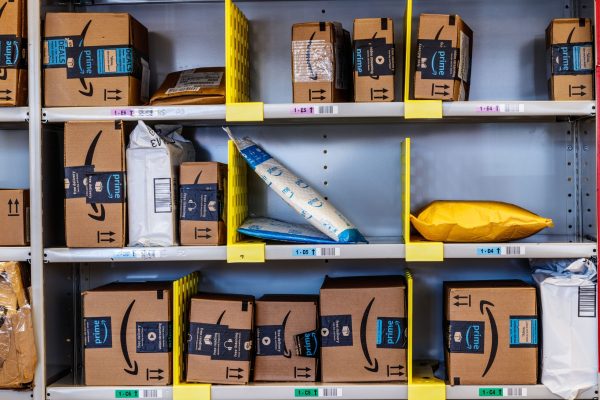The rise of “slow fashion” doesn’t just cover the ethical sourcing and production of clothes, but also supply chain, distribution and delivery methods.
Slow fashion “encourages slower production schedules, fair wages, lower carbon footprints and (ideally) zero waste. It represents a turn towards small batch collections, garments that are designed to last and a dedication to minimising the carbon footprint of one of the world’s largest sectors
Slow fashion logistics
When getting a product from A to B some amount of carbon emissions is inevitable, but there are ways to minimize and offset the environmental impact of fashion logistics and distribution.
Going green isn’t a sacrifice that requires significant investment; even small changes can make a big difference. In fact, the Carbon Trust estimates that a 20% cut in energy costs represents the same bottom line benefit as a 5% increase in sales.
Efficient freighting
Effective logistics planning, with the environment in mind, can lead to fewer truck miles, less fuel usage, less warehouse space and ultimately cut costs and waste, saving you time and money in the long run.
Simply reducing your reliance on air freight and using more efficient vehicles for transport where greener alternatives (such as rail) are available can significantly cut down your CO2 emissions. Eco-minded customers are increasingly opting for slower – but greener – delivery methods, so you can build brand loyalty by offering a truly valuable service to your customers whilst also minimising your carbon footprint.
Less waste
Plastic wrap, tissue, cardboard boxes and marketing materials have become the staples of delivery and are increasingly seen as hugely wasteful. Global brands, responding to consumer demand, are acting fast to reduce wasteful packaging; Gucci recently declared its aim to use only 100% recyclable packaging.
Optimising carton space, sourcing sustainable packaging materials and even using recyclable hangers rather than plastic ones can result in huge savings for any fashion retailer as well as the planet. Using compression packaging to pull air out of plastic-wrapped garments, enabling more goods to be shipped at a lower cost, can increase efficiencies up to 25%.
Sprint Logistics: Fashion Retail Logistics
With over two decades of experience in warehousing, freight, logistics and distribution, Sprint Logistics understands fashion retail logistics and we’re dedicated to helping our customers find greener ways to grow their businesses.
Our fashion and retail supply management solutions are tailored to your needs; we can help support your operations and minimise your carbon footprint whilst also ensuring you receive a leading global logistics service.
To find out more about our environmentally-friendly packaging, shipping and distribution methods, contact our expert team today.




